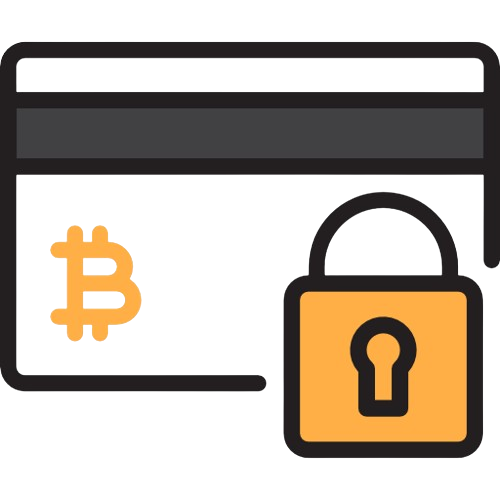
Bitcoin’s Lightning Network represents a milestone scaling solution for faster, cheaper transactions supporting wider blockchain adoption. This second-layer protocol’s growth has motivated Bitcoin wallet developers to integrate Lightning functionality. This guide examines Lightning’s inner workings and top wallets enabling access for users.
Understanding Lightning
Launched in 2018, the Lightning Network leverages smart contract functionality to facilitate bitcoin transactions off-chain more efficiently, and then settle net results on the underlying blockchain. This avoids needing to broadcast every single transaction to the Bitcoin network.
Lightning establishes payment channels between users that allow virtually limitless, instant transactions at negligible cost between the two parties. These transactions get logged and balances updated. Only the final netted position closes back to the blockchain when the channel concludes.
By alleviating congestion on the main Bitcoin blockchain, Lightning enables scalability to support extensive usage at lower fees and faster confirmation times. Payment channels and routed multi-hop payments are the key innovations that make this possible.
Wallets With Lightning Integration
To harness Lightning’s capabilities, Bitcoin holders need a crypto wallet facilitating Lightning Network access. Several leading wallets now offer onboarding to Lightning:
Muun – A user-friendly mobile Bitcoin wallet ideal for new Lightning users. Offers simple channel creation, inbound/outbound payments and integrated exchange.

Wallet of Satoshi – Another beginner-friendly Bitcoin wallet with quick access to Lightning payments in a simple interface. Funded channels activate instantly.
Zeus LN – A dedicated desktop Lightning wallet offering channel management, messaging and theme customization alongside standard wallet functionality.
Breez – Lightning-centric mobile Bitcoin wallet with a focus on ease of use. Excellent for novice Bitcoin users seeking to leverage Lightning.
Phoenix – Feature-packed desktop Lightning wallet with support for apps, plugins and instant swaps between BTC and Lightning.
These wallets demystify Lightning access within a seamless user experience. Advanced users can further customize routing, channels and fee settings.
Navigating Lightning
Once a Lightning-enabled wallet is set up, here are some usage tips:
– Fund your Base Layer wallet initially if needed, then allocate desired funds to open payment channels via on-chain transactions.
– Start by opening public channels with nodes offering higher capacity. This expands routes for payments.
– Payments under 2000 sats generally route successfully using public nodes. Larger payments may require manually customizing routes.
– Use caution when establishing private channels with untested nodes. Assess their conduct and capacity first.
– Adopt invoices for receiving Lightning payments from other users. This provides the payer with payment details.
– Be patient confirming payments initially. Delays occasionally occur on new channels until routes stabilize.
– Close channels cleanly when desired by settling the final balance on-chain in your wallet.
As familiarity increases, Lightning ticks the speed and cost boxes that make crypto networks viable for mainstream payments.
Lightning Benefits and Limitations
Lightning offers several notable benefits:
– Dramatic transaction speed boost relative to Bitcoin thanks to instant payments.
– Tiny transaction fees typically below a single satoshi obliterate on-chain costs.
– Micropayments become feasible, enabling innovative use cases.
– Enhanced privacy since only initial and final transactions are on-chain.
– Avoids blockchain congestion and frees up transaction capacity.
However, limitations remain:
– Requires sufficient liquidity distributed across nodes to enable transfers.
– Routing failures can still arise, interrupting transactions.
– Loss of channel funds is possible if key controlling channels are compromised.
– On-boarding and channel setup still feel technical, frustrating basic users.
Yet these cons must be weighed appropriately against the transformative upsides Lightning delivers despite its evolving state.
Future Lightning Growth
Lightning is still in its infancy in terms of adoption, but stands to grow in exciting new ways:
Continued enhancements to routing algorithms and capacity will solidify payments.

Layer 3 solutions built atop Lightning will unlock new applications.
Cross-chain bridges can connect Lightning to other blockchain networks for asset swaps and transfers.
– Stablecoins may come to Lightning, offering stabilized payments.
– Lightning apps (LApps) and microservices will drive utility and business use cases.
Wallet developers play a crucial role in abstracting away Lightning’s technical complexities through seamless UIs and experiences to propel mainstream adoption.
Conclusion
The Lightning Network represents a pivotal scaling leap forward to expand Bitcoin’s capabilities as peer-to-peer digital cash. Integrations with leading crypto wallets like Muun unlock simple access to Lightning’s transformative transaction speed and cost improvements. Adoption remains in its early stages but stands to accelerate with the right wallet abstractions. Harnessing Bitcoin’s full potential requires complementary scaling solutions like Lightning taking pressure off the base blockchain. The future looks bright as the protocol evolves and empowers wallets to provide frictionless onboarding. Speed and scale need not come at the expense of decentralization with thoughtful off-chain solutions. The Lightning torch shines brightly.